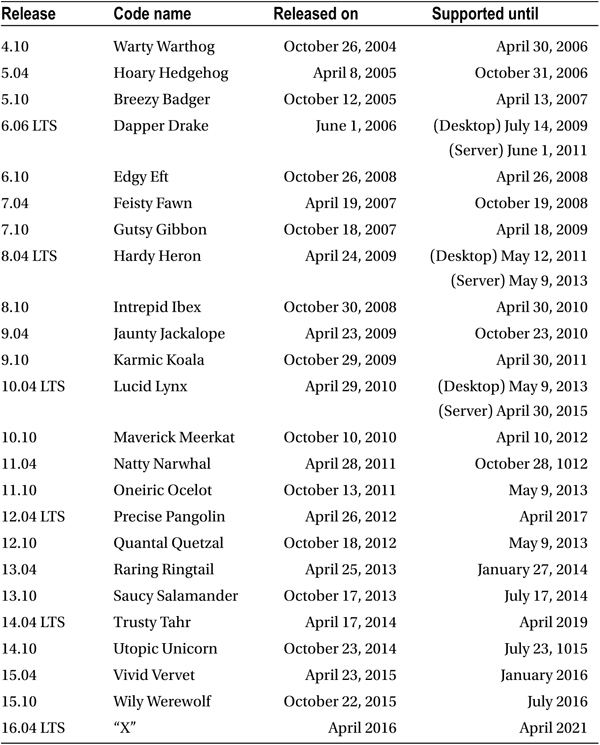![]()
Ubuntu Releases
Ubuntu is the result of tens of thousands of software projects coming together and receiving polish and integration. From the incredible work done by the Debian project to the focused effort by the Ubuntu community, this takes time and care. Canonical drives much of the design for the Unity interface and the foundational work done to support cloud, server, phone, and embedded platforms. But the bulk of the actual development and coding is done by the greater Free Software community.
Every six months, Ubuntu syncs its software repositories with Debian and works to polish and improve the software, sending general fixes back “upstream” to Debian whenever possible. After another couple of months, the software has improved and a new Ubuntu release is made.
When the Ubuntu project officially launched in 2004, it promised a new release every 6 months, with security and maintenance support for 18 months. Each release was given a version number matching the year and month of its release, so the first version of Ubuntu which was released in October 2004 was called Ubuntu 4.10.
After only six months of development, the release was very promising but still had some rough edges. The developers jokingly gave it the code name “warty warthog.” The software repository was named “warty.” Ubuntu 5.04 followed six months later in April and was a marked improvement. To celebrate the extra maturity of the software, it was codenamed “hoary hedgehog.”
Ubuntu releases are typically referred to by their release number or the adjective part of the code name. Thus, Ubuntu 14.04 LTS, the “Trusty Tahr” release, is referred to as both “14.04” and “trusty.” Each release code name is alliterative and chosen to reflect the goals for the release. For example, LTS names are chosen to evoke their extended lifetime support. “Dapper” received extra polish, “hardy” saw greater adoption on servers, “lucid,” “precise,” and “trusty” all speak to the Ubuntu’s clear focus and direction as it continues to evolve.
As Ubuntu began to grow in popularity as a desktop system, there was a desire to start running it on servers as well. Servers require a more reliable platform because performing a major software upgrade on a server every 6 months takes a lot of planning and downtime, and third-party hardware and software developers found it hard to target Ubuntu because of the rapid release schedule. It was decided that a long-term support release was required, and that Ubuntu 6.04 would be supported for 3 years instead of 18 months, and that the server components would be supported for a total of 5 years. Weeks before the release, the developers decided to delay the release for 6 more weeks to allow for final polishing. The planned Ubuntu 6.04 was released as Ubuntu 6.06 LTS. Additional releases came every 6 months as planned; and 2 years later, Ubuntu 8.04 LTS was released, which allowed Ubuntu 6.06 LTS users to upgrade directly, skipping the intermediate releases.
In April 2014, Ubuntu 12.04 LTS was released with the promise of 5 years of support for the desktop as well as the server, and the non-LTS releases saw their support lifetime drop from 18 months to 9 instead. Ubuntu 14.04 LTS continues with 5 years of support on both the desktop and the server, and a reliable foundation for computing everywhere.
List of Ubuntu Releases
Here is a list of Ubuntu releases from Ubuntu 4.10 to Ubuntu 16.04, along with their code names, release cycles, and release and end-of-support dates (see Table A-1). It is very important to use a supported version of Ubuntu on any computer with a network or Internet connection.
Table A-1. Each Ubuntu release has a version number, a code name, and support lifetime

